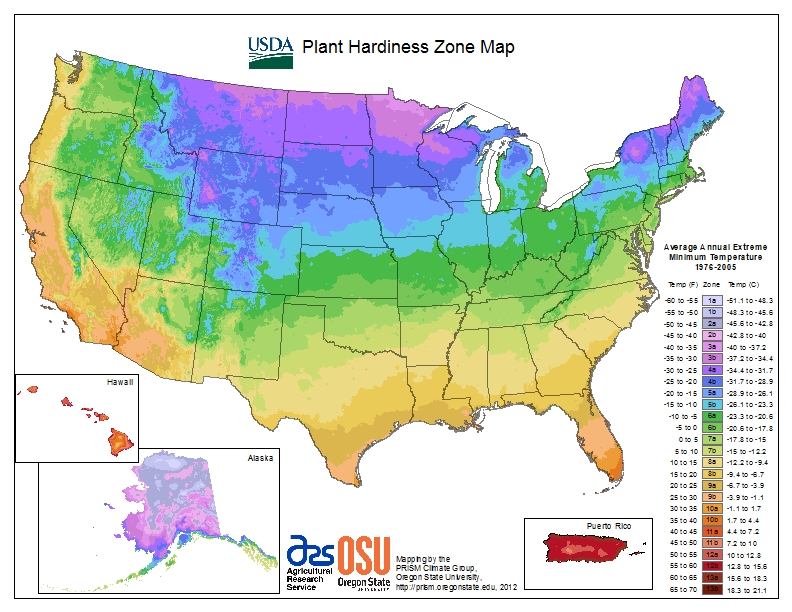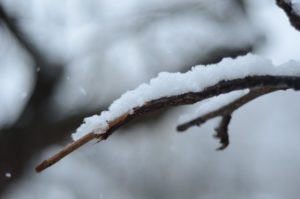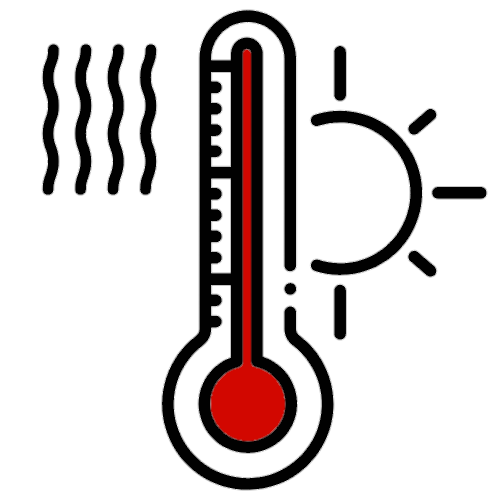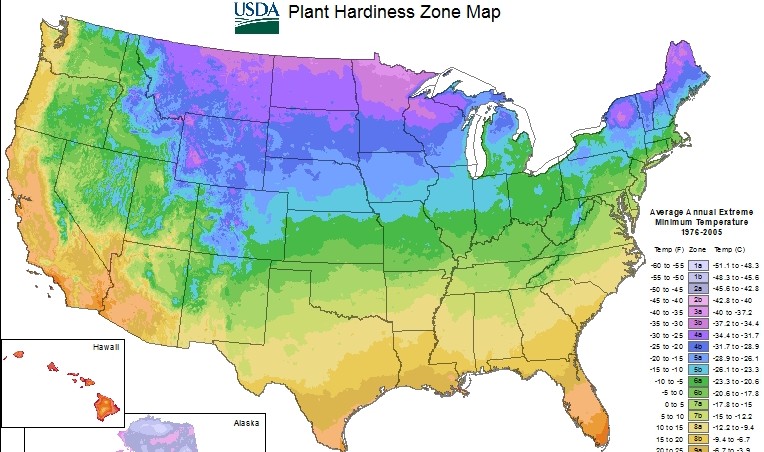
Step one in rebuilding my garden sanctuary here in North Alabama was figuring out my zone. Most gardeners who’ve been at it for any amount of time know their USDA Plant Hardiness Zone without a thought. If you’re new to the garden thing, the USDA Plant Hardiness Zones are meant to help growers figure out what kind of plants will survive in their location. The system divides the country up into zones based on their average annual minimum temperatures. Every 10 degrees (Fahrenheit) difference in that average annual low temperature is a different zone. Higher numbers signify higher average low temperatures. Nurseries, seed companies and other plant information guides then (usually) identify which zone or zones a particular plant can tolerate.
It’s not a perfect system since the only variable it’s based on is cold temperatures. A given plant’s tolerance to a particular zone in terms of cold is does not necessarily mean it will succeed in all locations that fall in that zone. It’s just one slice of the puzzle. The zone tells you nothing about your average annual high temperatures, rainfall, daylight hours….A plant zoned for 8b may thrive with no effort in 8b Seattle, Washington, but that is absolutely NO guarantee you will get the same result in 8b Austin, Texas particularly in the middle of July when you get a run of 100 degree temperatures and no rainfall for 3 weeks.

I went digging around for other zone guides to see if I could fill in those gaps. I found references, including in Wikipedia, to the American Horticultural Society having a heat zone maps as a counterpoint to those cold hardiness maps. I went directly to the AHS website, but couldn’t find these heat zone maps anywhere based on the links they had on their homepage, but doing a search on ye olde Google churned up this link to a heat zone map in their timeline stories. From what I gather zooming in on the map legend, this zone map divides the US up based on the average number of days a region experiences temperatures over 86 degrees F. At the first glance it might look like the USDA map, but it doesn’t take long to see the differences (Austin,TX and Seattle, WA look way different on this version).

I didn’t find a rainfall zone guide, but the National Oceanographic and Atmospheric Administration website has plenty of data on that. In theory there’s a mapping tool for their datasets, but I couldn’t get it to work for me (I’m assuming the issue is with me, not their site–if you have luck with the mapping tool, feel free to drop a comment!). I was able to pull up the straight data. I found the monthly rainfall averages for my location easily enough with the U.S. Climate Normals dataset.
So the data is out there, but there’s still a gap in what’s used to market to gardeners. You’ll find plenty of seed packets that give information based on that USDA zone, but good luck finding that for AHS Heat Zone. And you might find information on plant labels telling you if they like a lot of water or are drought tolerant, but that’s not going to tie to a particular rainfall amount. These variables are crucial, but evaluating how your conditions work with a particular plant is just going to take more than labeling. Talking with other gardeners in your area, visiting gardens in your area, looking at what others have in their yards or even what’s growing in parking lot landscaping–all of these can help piece together the puzzle of your area if you’ve been re-located. And even if your area tends towards particular things, the particular conditions in your yard might allow for something different. Taking your own rainfall and temperature measurements might open up (or narrow down) the envelope of possibilities.
Ultimately, I find myself moved from zone 8a to zone 7b. Not a huge difference. That alone didn’t really knock anything off of my go-to list. It rendered some of my perennial choices back to annual, and means there are things I’m keeping in pots so I can bring them in over winter that I probably would have put directly in-ground back home. The heat issue has not really changed much for me–maybe a little “cooler” relative to North Texas. But rainfall? Now that’s going to be a game changer…

